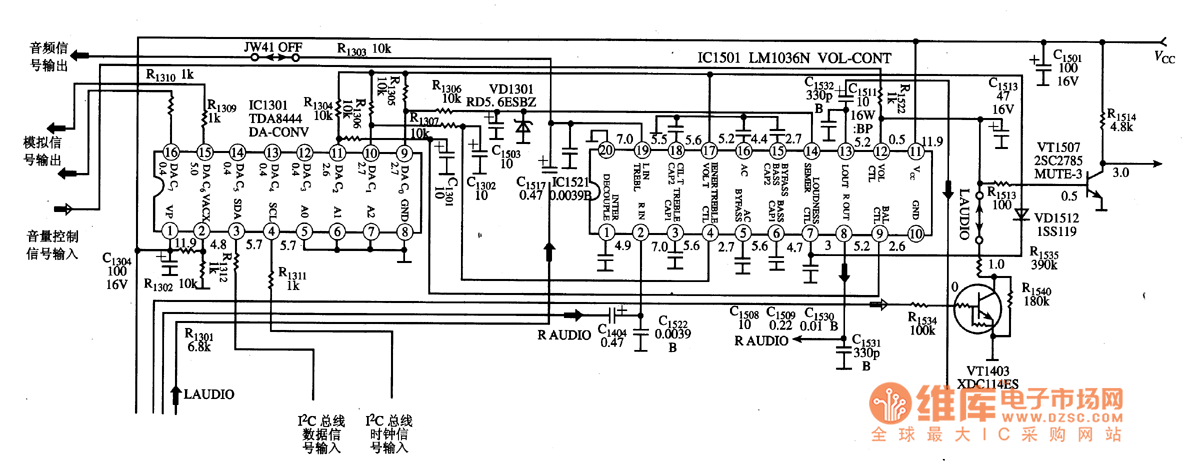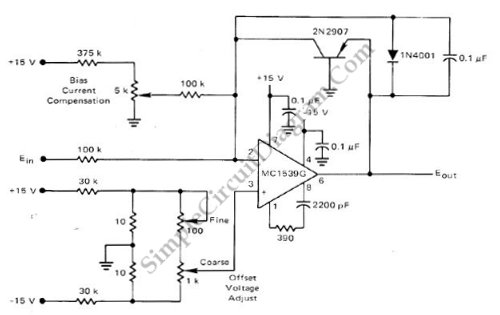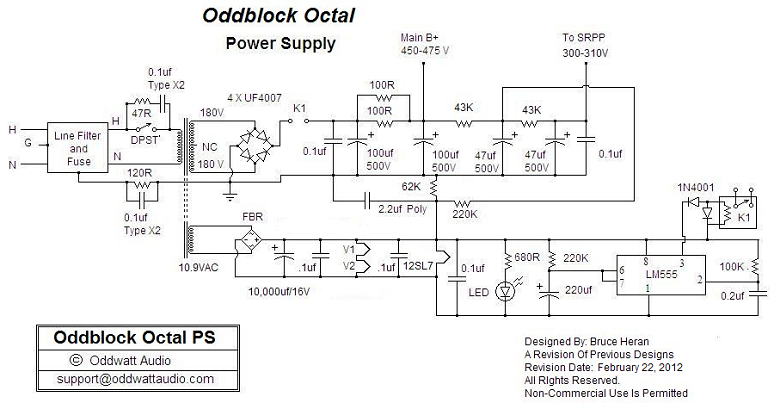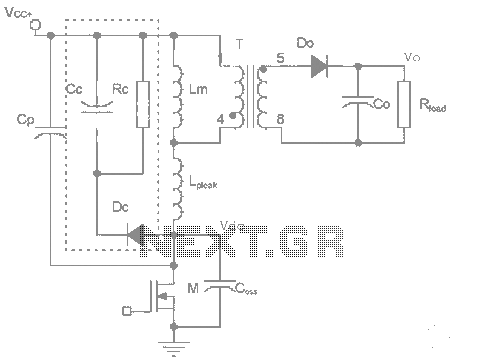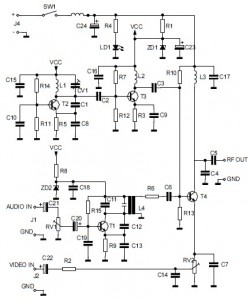
400V-60W push-pull DC-DC converter
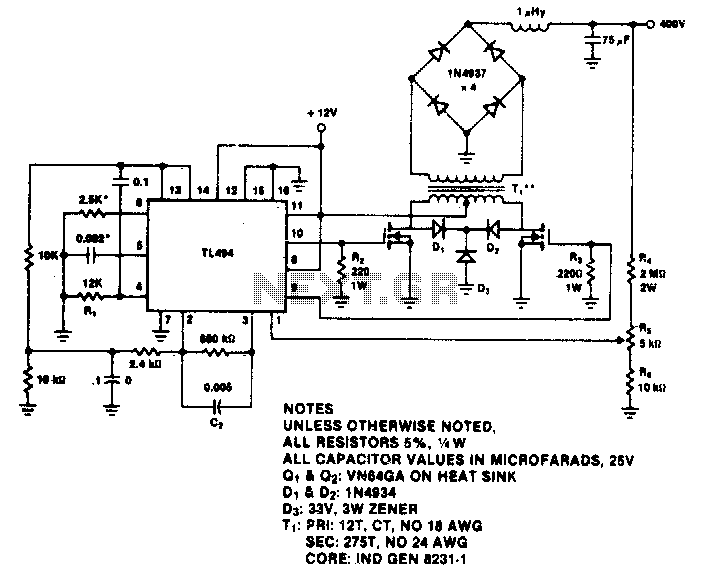
The TL494 switching regulator controls the operating frequency and regulates output voltage. The switching frequency is approximately 100 kHz for the specified values. Output regulation typically varies by 15% from no-load to full 60 W.
The TL494 is a versatile integrated circuit commonly used in switching power supply applications due to its ability to provide precise voltage regulation and efficient power conversion. This device operates at a nominal switching frequency of around 100 kHz, which is suitable for many applications requiring moderate power levels.
In terms of functionality, the TL494 features two error amplifiers that compare the feedback voltage from the output to a reference voltage, allowing for precise regulation of the output voltage. The output voltage can be adjusted using external resistors, enabling the design of power supplies that meet specific voltage requirements.
The output regulation capability of the TL494 is typically within 15% across the load range, from no-load conditions to a maximum output of 60 watts. This characteristic is crucial for applications where load variations are expected, ensuring that the output voltage remains stable and within acceptable limits even as the load changes.
In addition, the TL494 includes features such as a dead-time control to prevent cross-conduction in push-pull configurations, as well as a built-in oscillator for frequency stability. These features contribute to the overall efficiency and performance of the switching regulator circuit, making the TL494 an excellent choice for designers seeking reliable voltage regulation in their power supply designs.
Overall, the TL494 switching regulator is a robust solution for applications requiring efficient power management, with the capability to maintain output voltage stability across a wide range of operating conditions.The TL494 switching regulator governs the operating frequency and regulates output voltage. Switching frequency approximately 100 kHz for the values shown Output regulation is typically 15% from no-load to full 60 W. 🔗 External reference
The TL494 is a versatile integrated circuit commonly used in switching power supply applications due to its ability to provide precise voltage regulation and efficient power conversion. This device operates at a nominal switching frequency of around 100 kHz, which is suitable for many applications requiring moderate power levels.
In terms of functionality, the TL494 features two error amplifiers that compare the feedback voltage from the output to a reference voltage, allowing for precise regulation of the output voltage. The output voltage can be adjusted using external resistors, enabling the design of power supplies that meet specific voltage requirements.
The output regulation capability of the TL494 is typically within 15% across the load range, from no-load conditions to a maximum output of 60 watts. This characteristic is crucial for applications where load variations are expected, ensuring that the output voltage remains stable and within acceptable limits even as the load changes.
In addition, the TL494 includes features such as a dead-time control to prevent cross-conduction in push-pull configurations, as well as a built-in oscillator for frequency stability. These features contribute to the overall efficiency and performance of the switching regulator circuit, making the TL494 an excellent choice for designers seeking reliable voltage regulation in their power supply designs.
Overall, the TL494 switching regulator is a robust solution for applications requiring efficient power management, with the capability to maintain output voltage stability across a wide range of operating conditions.The TL494 switching regulator governs the operating frequency and regulates output voltage. Switching frequency approximately 100 kHz for the values shown Output regulation is typically 15% from no-load to full 60 W. 🔗 External reference
Warning: include(partials/cookie-banner.php): Failed to open stream: Permission denied in /var/www/html/nextgr/view-circuit.php on line 713
Warning: include(): Failed opening 'partials/cookie-banner.php' for inclusion (include_path='.:/usr/share/php') in /var/www/html/nextgr/view-circuit.php on line 713
